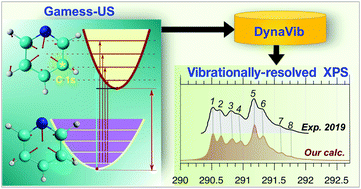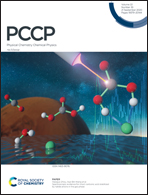Theoretical assessment of vibrationally resolved C1s X-ray photoelectron spectra of simple cyclic molecules†
Abstract
An interface between our in-house DynaVib package and quantum chemistry software Gamess-US is implemented for computing vibrationally-resolved K-edge X-ray photoelectron spectra (XPS) of molecules at the density functional theory level with both the full (FCH) and equivalent (ECH, or Z+1) core-hole approximations. To assess the influence of theoretical parameters (core-hole methods, vibronic coupling models, and basis sets), vibrationally-resolved C1s XPS of six simple cyclic molecules [furan, pyrrole, thiophene; benzene (C6H6 and C6D6); pyridine] were evaluated in the gas phase by both core–hole methods in combination with two time-independent vibronic coupling models, the Duschinsky rotation (DR) method and the linear coupling model (LCM). We achieved excellent/acceptable performance for FCH/Z+1 simulations in comparison with experiments. The most accurate method FCH-DR correctly reproduced all experimental features and gave an accuracy of ca. 0.2 eV in absolute binding energies (BEs). The choice of the vibronic model is less sensitive to that of electronic structure method. Results indicate that Z+1 overestimates the core–hole effect on the geometry of the ionization state.



 Please wait while we load your content...
Please wait while we load your content...